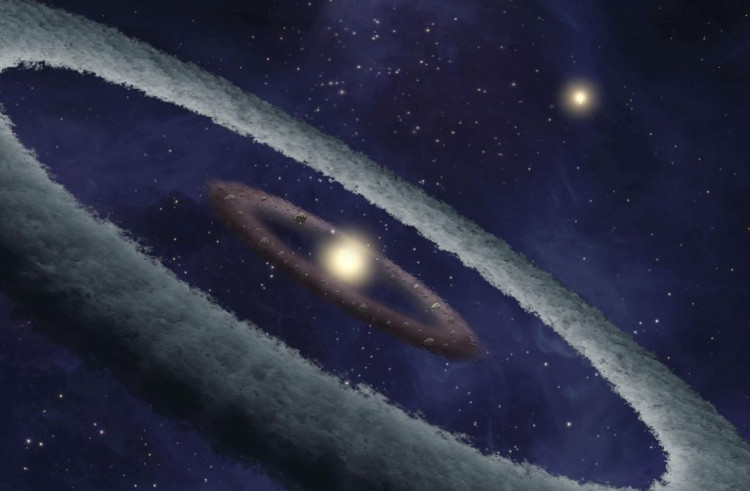Young stars abruptly reduce their light, aliens are suspected of being the culprits
Scientists found that the brightness of the star EPIC 204278916 unexpectedly dropped by 65% for 25 consecutive days, proving it was blocked by something huge.
According to News.com.au, German scientists have recently discovered a star that has shown a sudden light reduction named EPIC 204278916. In 78.8 days of observation, the light of the star EPIC 204278916 has any decline. usually up to 65% in 25 consecutive days. This shows that the light emitted is blocked by something very large, equivalent to the size of 650,000 comets of 200 km diameter combined.
Max Planck Institute of Astrophysics, Germany, began observing EPIC 204278916 since 2014. This star is within the scope of view of the Kepler Space Telescope of the US Aerospace Agency (NASA).

The light of the star EPIC 204278916 abnormal decline of up to 65%.(Photo: MIC).
The hypothesis of the Dyson sphere can explain the phenomenon of star reduction not due to natural causes such as dust clouds or comets. Physicist Freeman Dyson made this hypothesis for the first time in an article published in 1960. He predicted an advanced extraterrestrial civilization that would last a long time to exploit the solar energy of they. Therefore, the way to search for aliens is to find strange flashing stars.
EPIC 204278916 is a young star with an age of less than 11 million years. It is about the same size as the Sun but only half the mass.
However, another theory suggested by the researchers is that EPIC 204278916 may be surrounded by a disc of deformed dust due to the effects of pre-planetary masses in the outer circular orbit. If this disk of dust is tilted at a 57 degree angle to the human view, we will see the star brightness fluctuate up to 65%.
This is not the first time humans have discovered a star experiencing sudden light loss. According to Mother Nature Network, in November 2015, researchers at the University of Pennsylvania, USA, announced the strange discovery about star KIC 8462852 , also known as "Tabby's Star" of the constellation Swan (Cygnus ), about 1,500 light years from Earth.
More than 20% of the light of the star KIC 8462852 is blocked by a huge object in the last century, causing many to assume that this star is being exploited by aliens. If a Jupiter-sized planet moves across the front of the star, the amount of light blocked is only about 2%.
- Detect suspicious signals of aliens from more than 230 stars
- The star suspects an alien who absorbs energy and reduces the abnormal light
- The explosion of cosmic light was struck by two young stars
- Detecting UFOs 'shortcut path to the universe' to Earth?
- The new discovery of a star is said to be a giant structure of aliens
- The cause of the planet is not flashing like stars
- Revealing the reason why Rock music died young
- Why can't stars see in the daytime?
- Detecting 11 suspected alien radio signals
- Why is the star sparkling?
- Aliens contact the earth with lasers
- Strange star family portrait under X-ray technology
 Van Allen's belt and evidence that the Apollo 11 mission to the Moon was myth
Van Allen's belt and evidence that the Apollo 11 mission to the Moon was myth The levels of civilization in the universe (Kardashev scale)
The levels of civilization in the universe (Kardashev scale) Today Mars, the sun and the Earth are aligned
Today Mars, the sun and the Earth are aligned The Amazon owner announced a secret plan to build a space base for thousands of people
The Amazon owner announced a secret plan to build a space base for thousands of people